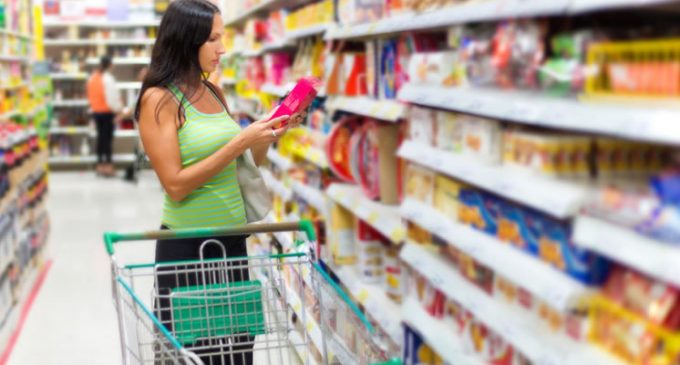Political Uncertainty Drives Consumer Goods M&A to Lowest Level Since 2011

Mergers and acquisitions among the top 50 consumer goods giants have fallen sharply from $226 billion in 2015 to $50 billion in 2016. This is according to OC&C Strategy Consultants’ 15th annual Global 50 report in collaboration with The Grocer, which examines the financial performance of the world’s 50 largest consumer goods companies – the likes of Nestle, P&G, Diageo and PepsiCo.
With organic revenue growth at historic lows and companies under pressure from activist shareholders to boost margins, M&A had become a critical source of growth among the Global 50 in recent years. But political uncertainty caused by Britain’s EU referendum, populist parties gaining ground across Europe and the US presidential election is likely to have depressed deal-making in the sector.
The decline in 2016 comes after a bumper year for M&A in 2015 and brings deal value to its lowest level since 2011, less than half the ten-year average (average annual deal value between 2006 – 2015: $108 billion).
The Global 50 saw organic growth slump further in 2016, down from 3.4% to 2.6%, with overall revenue growth turning negative for the first time in thirteen years (to -0.7%). The top 50 consumer goods giants have lost eight percentage points of sales growth in just five years (from +7.3% in 2011 to -0.7% in 2016).
Will Hayllar, Partner at OC&C Strategy Consultants, comments: “The bottom fell out of consumer goods M&A in 2016, and political uncertainty has undoubtedly played a significant part in this. With the Global 50 struggling to find growth and under increasing pressure to boost margins, there’s more reason than ever for M&A activity – be that acquisitions to access growth segments in their categories like premium and natural or consolidation to drive profitability. Clearly, events across Europe and the US made many cautious of pulling the M&A trigger in 2016.”
He elaborates: “However, we’ve already seen green shoots in the first half of 2017 with M&A beginning to recover across the sector as businesses adjust to the new political norms. Between January and May, ten deals have been announced with a combined value of $87bn. Although one of the biggest potential deals – Kraft Heinz’s failed takeover attempt of Unilever – was spectacularly scuppered earlier this year.”
Whilst the Global 50 haven’t broken the growth deadlock, they have made progress on profitability. Both gross and net profit margins grew in 2016, with headline net profit up by a massive 2.2 percentage points, increasing to 18.8% from 16.6% the previous year. Most of this was due to exceptional gains, however, and the underlying net profit margin increase was a more modest 0.5 percentage points to 17.0%. Despite a public focus from FMCG companies on cost cutting programmes, this increase in profitability was driven largely by favourable commodities prices, rather than a reduction in overheads or the impact of the 3G Capital inspired zero-based budgeting approach which many of the Global 50 claim to have adopted.
Will Hayllar continues: “The landscape continues to be challenging for consumer goods companies, but there are winning strategies out there. By focusing on e-commerce, premiumisation and tapping into consumer trends, such as healthy living, we’ve seen industry leaders grow. Early adopters should redouble their efforts in these areas to kick-start growth, and those slower off the mark should incorporate these aspects into their business strategies as soon as possible or risk being left behind.”
 Sector leaders such as PepsiCo, Unilever, and Nestle are finding superior organic revenue growth through these strategies:
Sector leaders such as PepsiCo, Unilever, and Nestle are finding superior organic revenue growth through these strategies:
- Actively pursuing e-commerce opportunities has resulted in Unilever, Mondelez and Nestle growing their e-commerce revenues by 30-50% over 2016. Despite e-commerce being a relatively low share of revenue, these companies show it can ultimately provide 1-2 percentage points of overall organic growth.
- Premiumisation strategies, both organic and inorganic, have also proved effective. Diageo, for instance, has launched new brands and products to grow its premium presence in existing categories. Diageo’s commitment to premium brands has been further evidenced through its $1bn acquisition of George Clooney’s Casamigos premium tequila brand in recent weeks. Others have also grown their premium offering through M&A, for example Unilever’s multiple acquisitions of smaller players in recent years such as T2 and REN.
- Tapping into the healthy living trend among consumers has generated good results. Now, Innocent make up 1% of Coca-Cola’s sales that although relatively small has the potential to make a big difference to the growth of the business. Likewise, just 12% of PepsiCo’s revenue now comes from Pepsi, whilst ‘Everyday Nutrition’ generates 25% and ‘Guilt-Free’ 45% of revenues, underpinning superior organic growth of PepsiCo in the past year.
OC&C and The Grocer’s Global 50 Top 10 2016
- Nestle AG (1)
- Procter & Gamble (2)
- PepsiCo (3)
- Unilever (4)
- JBS (5)
- AB InBev (7)
- Coca-Cola Company (6)
- Tyson Foods (8)
- L’Oréal (10)
- Philip Morris International (12)


































